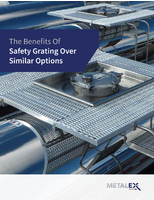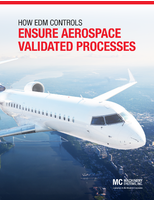NESCC Meeting Explores nuclear commercialization standards.
Press Release Summary:
Meeting of Nuclear Energy Standards Coordination Collaborative (NESCC) on November 22, 2010 focused on standards required to jumpstart widespread commercialization of U.S. nuclear industry. NESCC seeks to identify standards needed for design, operation, development, licensing, and deployment of nuclear power plants as well as other nuclear technologies. Meeting drew 46 individuals across industry, government, and standards developing organizations.
Original Press Release:
NESCC Meeting Explores Standards to Support Commercialization of U.S. Nuclear Industry
U.S. electricity demand is expected to increase 28% by 2035, while annual carbon dioxide emissions are projected to increase by 275 million metric tons. With statistics like these, it's easy to see why clean nuclear power has become a key element of the U.S. energy strategy.
Standards needed to jumpstart the widespread commercialization of the U.S. nuclear industry took center stage at the meeting of the Nuclear Energy Standards Coordination Collaborative (NESCC) on November 22. A joint initiative of the American National Standards Institute (ANSI) and the National Institute for Standards and Technology (NIST), the NESCC seeks to identify the standards needed for the design, operation, development, licensing, and deployment of nuclear power plants and other nuclear technologies. Held at NIST's headquarters in Gaithersburg, MD, the meeting drew 46 individuals from industry, government, and standards developing organizations.
According to Richard Black, director of the Office of Advanced Reactor Concepts at the U.S. Department of Energy (DoE), nuclear generation is critical to meeting the growing electricity demand and ensuring energy supply, security, and grid reliability. However, the current fleet of nuclear plants is expected to retire between 2029 and 2056, and the cost of replacing them is projected at $600 billion.
With clean energy and job opportunities in mind, the Office of the Advanced Reactor Concepts is looking to small modular reactors (SMRs) as a less capital intensive and more readily manufactured alternative to larger reactors. In his presentation to the NESCC, Mr. Black noted that the assembly line replication of SMRs would optimize cost, schedule, and quality through greater standardization of components and processes. The effort would also create thousands of high-quality manufacturing, construction, and engineering jobs.
A hiatus in U.S. nuclear designs and technologies has resulted in the need for nuclear codes and standards to support new designs, Mr. Black said. A key objective of the Office of the Advanced Reactor Concepts is to build financial assistance partnerships with industry with the goal of certifying, licensing, and deploying at least two light water reactor-based SMRs by 2020. He also called for collaboration among standards developing organizations and the U.S. Nuclear Regulatory Commission (NRC) to address gaps in codes and standards in support of SMR designs.
Potential SMR projects at DoE and U.S. Department of Defense (DoD) sites would facilitate energy security and sustainability for critical DoE and DoD mission success and support U.S. nonproliferation goals by developing a more secure reactor technology, Mr. Black also noted.
DoE's Thomas P. Miller highlighted the Office of Nuclear Energy's Nuclear Energy Enabling Technologies Program (NEET), which supports the development of new and advanced reactor concepts and fuel cycle technologies. The goal of the program is improved quality and economics of equipment, component and module fabrication, and manufacturing. Looking forward into 2011, NEET will initiate a detailed research roadmap effort, including high-potential research and development projects with industry and laboratories across a variety of manufacturing and fabrication technologies.
Citing an issue with improperly laid cement at a nuclear facility in another country, the NESCC discussed the potential need for an updated and enhanced nuclear certification program for concrete technicians and inspectors. The NESCC's Concrete Task Group, which seeks to establish coordination and consistency of safety and non-safety related concrete requirements, will explore the need for work in this area.
The NESCC also considered updates from the Nuclear Energy Institute (NEI); the Gas Technology Institute (GTI), on its long term experience with polyethylene pipe systems and related standards; ASTM International, on ASTM Committee 26 on Nuclear Fuel Cycle; and the NESCC Task Groups on polymeric piping, concrete, and a standards database for plant development related standards.
All of the presentations from the November 22 NESCC meeting are available in the NESCC document library.
The next meeting of the NESCC will take place on March 1, 2011, at NIST in Gaithersburg, Maryland.
NESCC is open to all stakeholders, government legislative and regulatory bodies, industry, standards developing organizations, certification organizations, and other interested parties. The intent is to create a highly inclusive, collaborative forum with participation from a range of perspectives that is not disproportionately dependent upon any single interest, organization, or stakeholder group. For information on joining the NESCC, contact Sally Seitz at sseitz@ansi.org.




